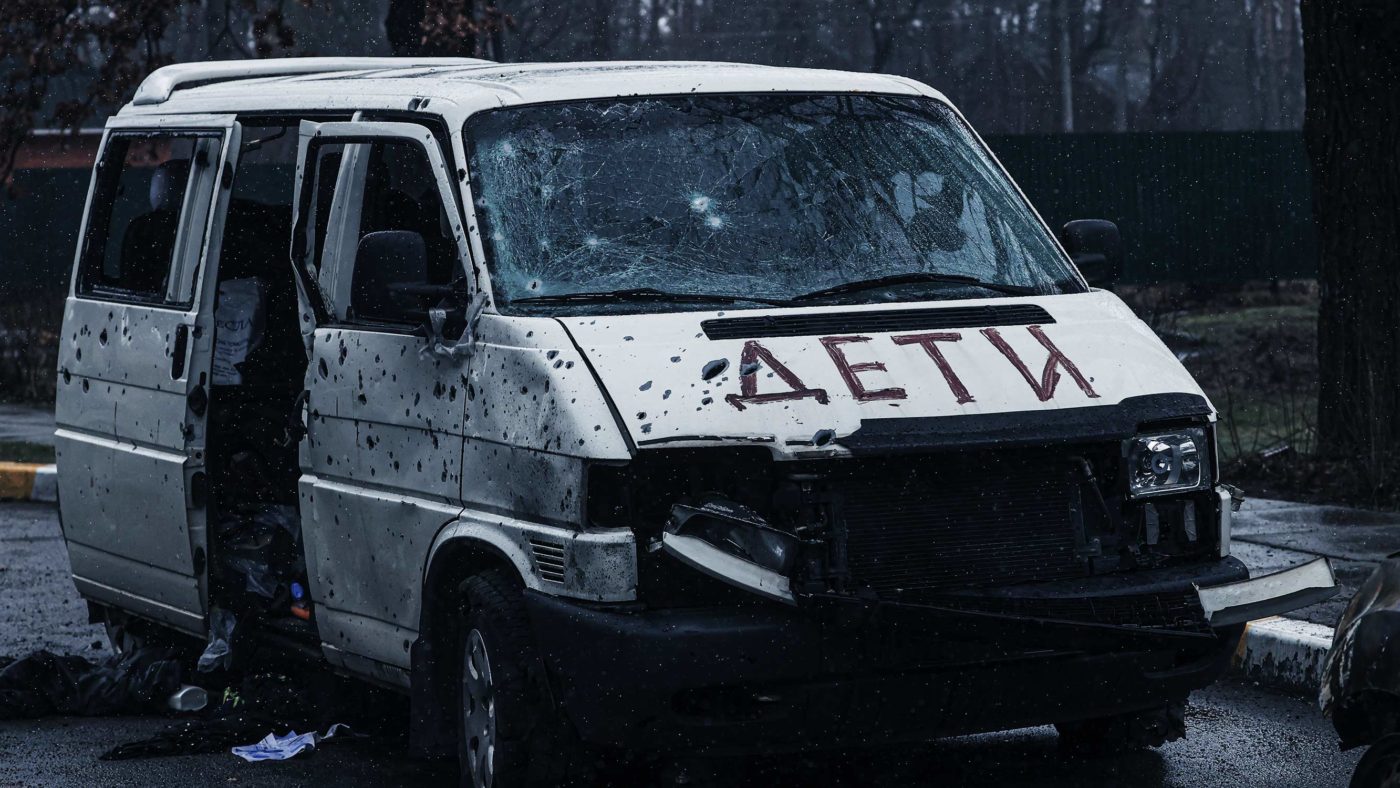Where does one begin?
Mass graves, dead bodies strewn across the street, some discovered with gunshot wounds to the head, others with signs of rape and torture. You don’t need many adjectives to convey the horror of what has happened in the towns north of Kyiv; simply listing what the Russian army left behind does the job adequately.
It’s become customary, even perfunctory, to describe these acts of mass murder as ‘shocking’. But, however appalling, what happened in Bucha, Irpin and Gostomel should not have come as a surprise.
It is easy to understand how, looking at the scorched Russian armour on the highways north of Kyiv, one might conclude that this barbarism was a bloodthirsty reaction to a military campaign that has gone badly wrong. The truth, however, is that it is the latest iteration of a Russian military playbook that has long reduced the mass murder of civilians to a mere tactic.
The outstanding historian of Russia, Simon Sebag Montefiore, responded to the reports by invoking Stalin’s massacre of 22,000 Poles in Katyn Forest. That parallel might be striking, but you don’t need to go as far back as 1940 for comparable atrocities.
In both Chechen wars, in 1995 and 2000, Russian forces roamed towns and villages murdering and looting in much the same way they have done in Ukraine. The massacres in Samashki and Novye Aldi might not be on the lips of many Western pundits today, but they will probably be in the minds of many Chechens observing events near Kyiv. It was in the second Chechen war that saw the same concerted use of zachistka, an operation whereby troops go from house to house, room to room to ‘mop up’ undesirable elements.
More recently in Syria, the assault may have come from the air, but it was no less murderous for that. In the 2017 attack on Atarib, for instance, Russian aircraft dropped bombs on a marketplace, killing scores of civilians in the space of a few minutes.
And if those examples weren’t proof enough, just look at what they have done to Ukraine. The pulverised theatres, hospitals, shopping malls and residential buildings are not collateral damage in a wider military campaign, they are the military campaign – the aim of which is not just to hobble Ukraine’s military, but to cow its population into submission by making it clear that no one is safe. Likewise the consistent shelling of humanitarian corridors, and the attack on the Red Cross building in Mariupol.
Of course, the instinctive human reaction to the pictures from Bucha and its neighbouring towns is entirely understandable. Even when blurred out by sensitive broadcasters, there’s something particularly immediate, arresting and nauseating about the sight of civilians shot and maimed at close quarters.
What’s puzzling, though, is the idea that Russia has only now crossed some kind of line, given the enormity of the charge sheet it has already racked up. Is anyone seriously suggesting we needed any more evidence of Putin’s savagery?
Meanwhile, the Kremlin-controlled media continues to conjure its own magical reality, in which its rag-tag band of murderers and mercenaries is really a force of liberation.
To read today’s article from propagandist Timofei Sergeitsev, entitled ‘What Russia should do with Ukraine’, is to enter a parallel universe in which Ukraine is overrun by Nazis, with a ‘mass’ of its population either acquiescent or enthusiastically supporting these fearful fascists. Sergeitsev’s bullet-point plan for the ‘liquidation’ of Ukraine’s government, mass prosecutions, forced labour and executions is chilling, but also sickeningly familiar. It reads like a more specific exposition of the kind of rhetoric that has been emanating from Moscow for years – rhetoric that denies Ukraine’s very statehood.
What, though, will be the Western response?
One thing is clear: hand-waving about ‘international law’ and respecting the Geneva Convention are pointless when the mechanisms for enforcing such principles are non-existent, and the criminal perpetrators are entirely unbothered by them. Suspending Russia from the UN Human Rights Council might send a symbolic message, but it won’t get Putin’s troops out of Ukraine.
What Ukraine needs now is not more hashtags, illuminated buildings or long-term plans to wean the West off Russian hydrocarbons: it needs more money, materiel and weapons to purge its territory of Putin’s hateful, hate-filled forces.
Click here to subscribe to our daily briefing – the best pieces from CapX and across the web.
CapX depends on the generosity of its readers. If you value what we do, please consider making a donation.


